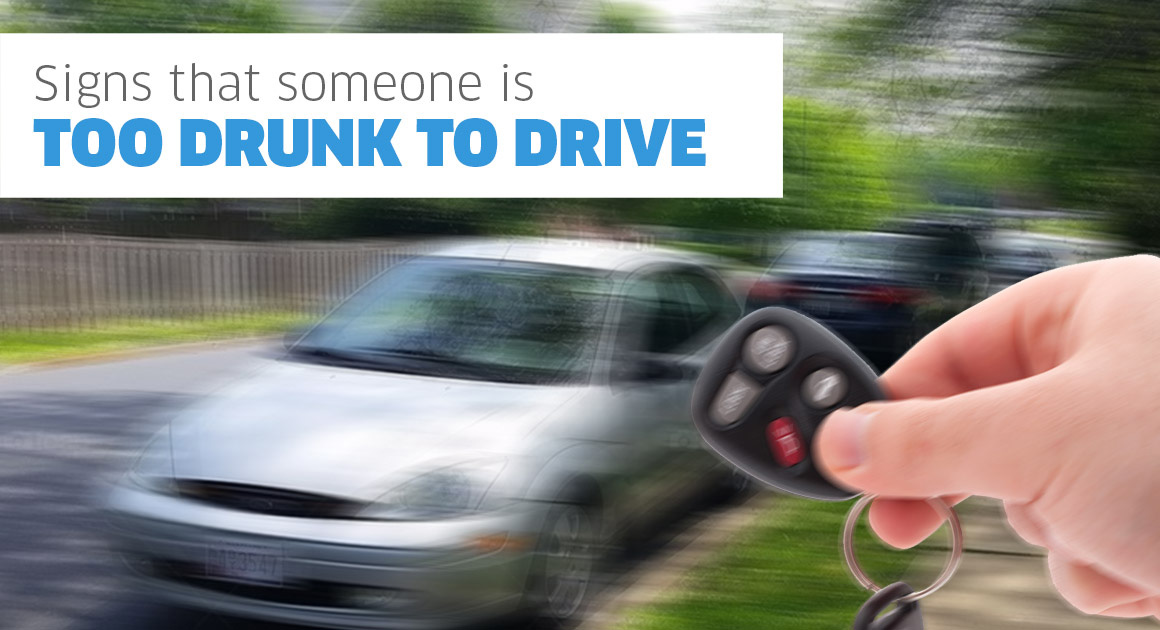It is not a secret that drinking and driving are deadly, yet every year approximately 10,000 deaths occur related to drunk driving car crashes. In every state, it is illegal to drive with a blood alcohol concentration (BAC) of 0.08%, but sometimes the signs that someone is too drunk to drive are not obvious.
Below is a brief list of signs that someone is too drunk to drive. This list is not intended for legal advice.
Figuring out your BAC is not an exact science. Gender, weight, type and amount of alcohol and duration of time all affect a person’s BAC. The following is a chart put out by the National Highway Traffic and Safety Administration (NHTA).
The Effects of Blood Alcohol Concentration
| BLOOD ALCOHOL CONCENTRATION (BAC) IN G/DL | TYPICAL EFFECTS | PREDICTABLE EFFECTS ON DRIVING |
| 0.02 | Some loss of judgment; relaxation, slight body warmth, altered mood | A decline in visual functions (rapid tracking of a moving target), a decline in the ability to perform two tasks at the same time (divided attention) |
| 0.05 | Exaggerated behavior, may have a loss of small-muscle control (e.g., focusing your eyes), impaired judgment, usually good feeling, lowered alertness, the release of inhibition | Reduced coordination, reduced the ability to track moving objects, difficulty steering, reduced response to emergency driving situations |
| 0.08 | Muscle coordination becomes poor (e.g., balance, speech, vision, reaction time, and hearing), harder to detect danger; judgment, self-control, reasoning, and memory are impaired | Concentration, short-term memory loss, speed control, reduced information processing capability (e.g., signal detection, visual search), impaired perception |
| 0.10 | Clear deterioration of reaction time and control, slurred speech, poor coordination, and slowed thinking | Reduced ability to maintain lane position and brake appropriately |
| 0.15 | Far less muscle control than normal, vomiting may occur (unless this level is reached slowly or a person has developed a tolerance for alcohol), major loss of balance | Substantial impairment in vehicle control, attention to driving task, and in necessary visual and auditory information processing |
The NHTA published a list of predictable effects on driving after consuming alcoholic beverages and while each person is affected differently, these are signs that are nice to know before a person attempts to drive.
Signs that someone is too drunk to drive include:
-
- Nystagmus or involuntary movement of a person’s eyes (there is a medical condition…)
- Poor balance
- Decreased coordination or reaction time
- Loss of ability to walk in a straight line
- High or low emotional states including aggression
- Slurred speech
- Decreased memory
If you make the choice to drink, make the choice to designate a sober driver. If you choose to drink and then drive or get into a vehicle with someone who has been drinking, consider purchasing a portable breathalyzer to help you estimate BAC as the signs that someone is too drunk to drive are not always obvious.

